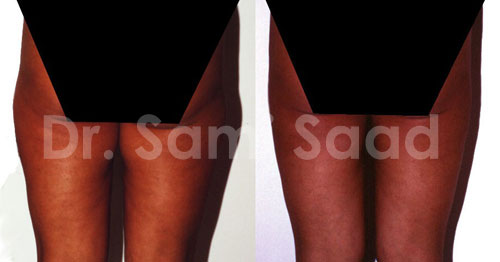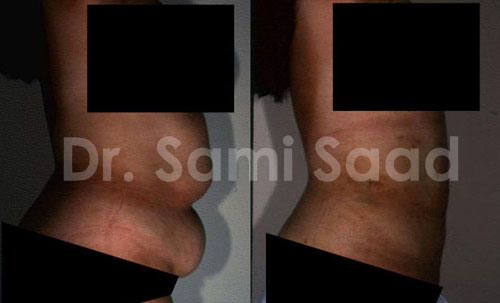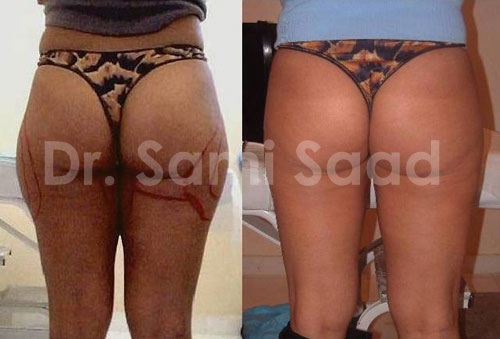Liposuction
Procedure:
Improves body shape by removing exercise-resistant fat deposits with a tube and a vacuum device. This procedure can be performed using the tumescent or the super-wet techniques. Liposuction techniques typically are performed after targeted fat cells are infused with a saline solution containing a local anesthetic and adrenalin to decrease blood loss, allow an easier removal of the fat, as well as diminish postoperative discomfort. This also reduces post-operative bruising and swelling. The most common locations for liposuction are: chin, cheeks, neck, and upper arms, the area above the breasts, abdomen, buttocks, hips, thighs, knees, calves, and ankles.
There are two types of techniques commonly used: the "Traditional Technique" and the "Ultrasonic Technique (UA)". The Traditional Technique utilizes a hollow tube to remove the fat and the Ultrasonic Technique utilizes ultrasonic energy to dissolve that fat before it is removed. (See your Physician regarding which technique would be best for you)
Length:
Traditional: One to two hours or more
UAL is peel out: 20-40% longer than Traditional liposuction
Anesthesia:
General anesthesia can be used or intravenous sedation and local anesthesia are used.
Inpatient/Outpatient:
This is an outpatient procedure.
Possible Side Effects:
Temporary bruising, swelling, numbness, soreness or burning sensations.
Risks:
Infection, asymmetry, rippling of the skin, pigmentation changes (hypo/hyper), injury to the skin, fluid retention and/or excessive loss of blood and fluids.
Recovery:
The patient usually returns to work after five to fourteen days. More strenuous activity may be resumed after two to four weeks. Full recovery from swelling and bruising may take one to six months depending upon the amount of fat that is removed and the areas that were treated.
Results:
The effect is permanent and must be augmented with a sensible diet and consistent exercise.


